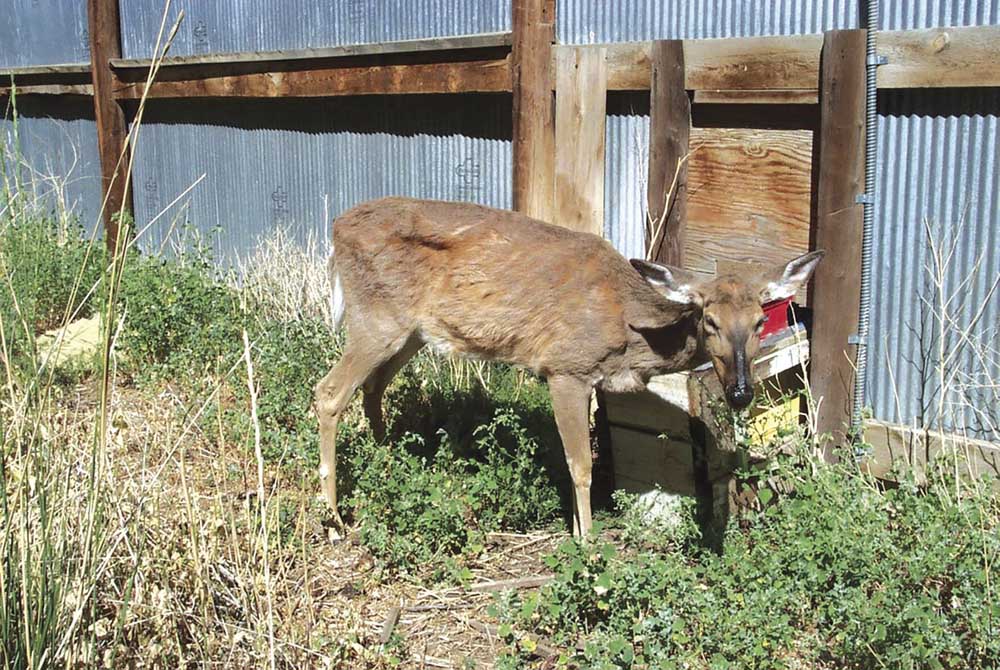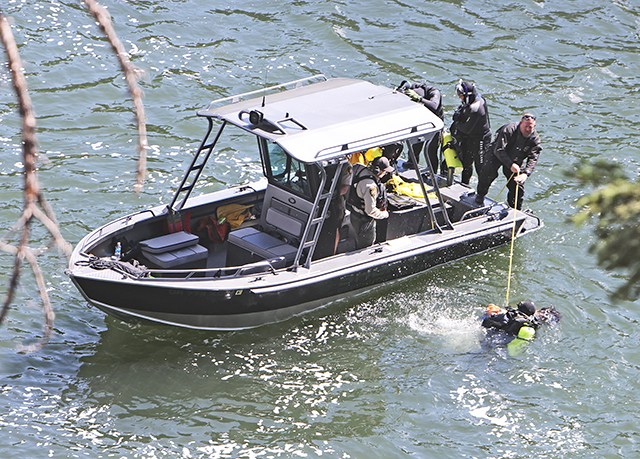Chronic wasting disease found in deer near Oregon
Published 7:00 am Friday, December 17, 2021

- This deer has visible signs of chronic wasting disease. Two deer hunted in Idaho in October just 30 miles from Wallowa County tested positive for the disease recently, and the Oregon Department of Fish and Wildlife is asking anyone who has taken a deer to turn in the head for testing.
ENTERPRISE — Hunters and anyone who comes in contact with dead deer, elk or moose are asked to bring in the heads for testing for chronic wasting disease, a neurological disease fatal to those animals.
Bree Furfey, the Oregon Department of Fish and Wildlife district wildlife biologist for Wallowa County, said Dec. 9, that hunters killed two deer in October in Idaho about 30 miles from the Oregon border. The deer have since tested positive for chronic wasting disease.
Trending
“It’s never been close to Oregon before,” she said, adding that means there has never been a case of chronic wasting disease in the state.
Furfey encouraged hunters or anyone coming upon a dead deer, elk or moose to drop off the heads for disease sampling. A barrel is outside the Enterprise ODFW office and the offices in La Grande and Baker City. Information on where the animal came from should be included.
According to an ODFW press release, the Idaho Department of Fish and Game has taken immediate steps to increase surveillance to determine the extent of the disease in the area including via a special hunt.
Oregon, too, is ramping up wasting disease testing of deer and elk, especially in Northeast Oregon, by asking hunters, roadkill salvagers and others to help the department look for any cases of the disease in Oregon deer and elk. There are only a handful of moose in the state, and there’s no legal hunting of them.
Alarming news
“The news of an Idaho detection is alarming, but we have been working for years to keep CWD out of Oregon and preparing to respond if it is detected here,” said Colin Gillin, ODFW’s state wildlife veterinarian.
Trending
Gillin has been active in national efforts to monitor and slow the spread of chronic wasting disease for decades through participation in the Association of Fish and Wildlife Agencies Health Committee. He currently serves in the leadership of the wildlife health committee and as a co-editor for national guidance on AFWA Best Management Practices for surveillance and response of the disease.
Furfey said the positive Idaho test so close to Oregon makes it all the more alarming because once it arrives in Oregon, it may be here to stay.
“There’s no effective way to eradicate it once it becomes established,” she said.
She said there’s also no cure or vaccine for the disease.
The ODFW already has emailed tag holders for ongoing and upcoming deer and elk hunts in select Northeastern Oregon units requesting they provide parts from their deer or elk for testing if they are successful on the hunt. Barrels placed at various locations will make it easier for these hunters to submit a head for sampling by biologists and veterinarians.
Beginning in 2022, it will be mandatory for anyone transporting wildlife carcasses or parts to stop at a check station if they encounter one and to allow their animal to be tested.
A ban on importing deer and elk parts also remains in effect: Oregon residents or those traveling through who are returning from hunting out of state may not bring in certain parts that contain brain or spinal cord tissues as these are known to be tissues of chronic wasting disease concentration in infected animals. Several hunters have been cited for violating this regulation, most recently in Klamath County. Oregonians who hunt in other states also need to be aware of and follow that state’s regulations for the disease.
Furfey said that ODFW has been closely watching for chronic wasting disease since the late 1990s and has tested more than 23,000 samples since then. No tests have returned positive, she said.She said it is not believed that the disease can be transmitted to humans, pets or livestock, but it is always fatal to deer, elk and others in the species. She said it comes from a protein that lives in the environment and can for several years while passing between animals.
She said if an animal tests positive, it is recommended to not eat the meat.
Symptoms
An animal may have the chronic wasting disease for months or years before it becomes apparent.
“You can harvest a perfectly looking animal and not be able to tell,” Furfey said.
Symptoms include staggering, poor posture, a wide stance, apparent disorientation, lowered ears, an emaciated appearance, consuming lots of water and drooling.
“But again, it could take months or years for those symptoms to show up,” she said.








